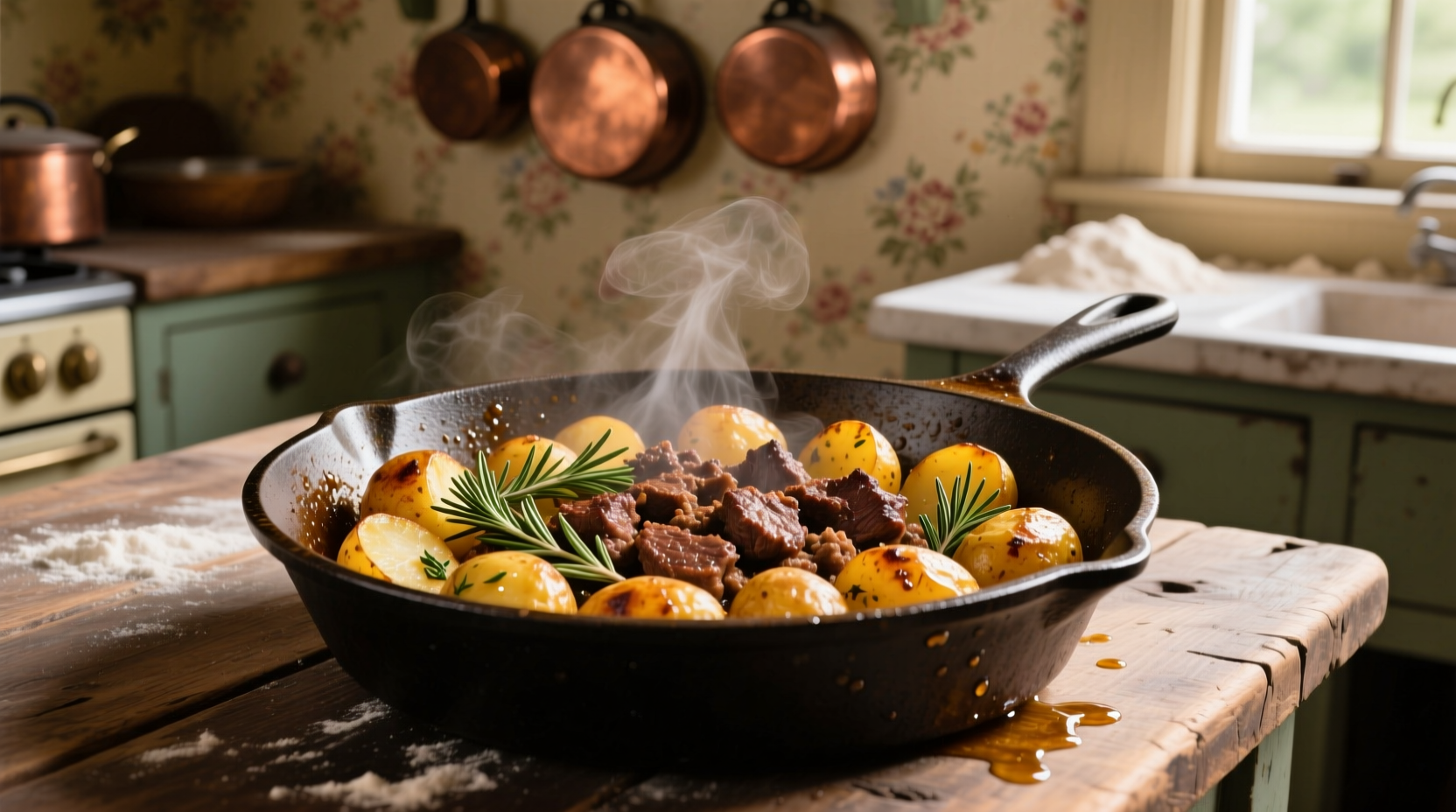Discover why this classic ingredient pairing has sustained households worldwide for generations. Potatoes provide complex carbohydrates and potassium, while ground beef delivers complete protein and iron—a nutritionally complementary combination that forms the foundation of countless global dishes from shepherd's pie to empanadas.
Why This Ingredient Pairing Works
The magic happens through flavor chemistry: potatoes' mild starchiness absorbs beef's savory umami compounds while their natural sugars caramelize during cooking. This creates the Maillard reaction that develops deep, complex flavors professional chefs rely on. According to USDA FoodData Central, a 1:1 ratio delivers 22g protein and 35g carbohydrates per 300g serving—making it nutritionally balanced for active adults.
| Nutrient | Potatoes (100g) | Ground Beef (10% fat, 100g) | Combined (1:1 ratio) |
|---|---|---|---|
| Calories | 77 | 217 | 147 |
| Protein | 2g | 20g | 11g |
| Carbohydrates | 17g | 0g | 8.5g |
| Fat | 0.1g | 13g | 6.5g |
Nutritional data sourced from USDA FoodData Central (2023)
Essential Equipment Checklist
- Cast-iron or heavy-bottomed skillet (retains heat for proper browning)
- Meat thermometer (critical for food safety)
- Ricer or masher (creates smooth texture without gluey potatoes)
- Slotted spoon (separates beef from excess fat)
Master Recipe Template
Follow this professional framework adaptable to any cuisine:
- Prep potatoes: Cut into uniform 1-inch cubes, boil until fork-tender (12-15 minutes)
- Cook beef properly: Heat skillet to 375°F, add 1 lb ground beef, break into small pieces, cook to 160°F internal temperature
- Build flavor foundation: Drain excess fat, return beef to heat, add 1 diced onion and 2 minced garlic cloves
- Combine elements: Fold in potatoes with 1/4 cup broth, season with salt and pepper
- Finish with texture: Top with crispy potato edges or fresh herbs

Global Flavor Variations
Transform this basic template with authentic regional touches:
Mexican-Style Picadillo
Add 1 diced bell pepper, 2 tbsp tomato paste, 1 tsp cumin, and 1/2 cup olives during cooking. Serve with warm tortillas—a traditional preparation documented in Mexican culinary archives dating to the 1800s.
Eastern European Goulash
Incorporate 2 tbsp paprika, 1 diced carrot, and 1/2 cup sour cream. This adaptation follows USDA food safety guidelines requiring dairy added after main cooking completes at 165°F.
Avoid These Common Mistakes
- Overmixing potatoes: Creates gummy texture (starch molecules break down excessively)
- Insufficient beef browning: Skipping the 375°F sear misses crucial flavor development
- Adding cold potatoes to hot beef: Causes temperature shock and uneven cooking
- Underseasoning: Potatoes require more salt than you'd expect—season in layers
Food Safety Timeline
Follow this critical sequence to prevent foodborne illness:
- 0-2 hours: Cook ground beef to 160°F minimum (USDA Food Safety and Inspection Service standard)
- 2-4 hours: Cool completely before refrigeration—spread in shallow containers
- 3-4 days: Maximum safe refrigerator storage (40°F or below)
- 2-3 months: Safe freezer storage when properly packaged
Never leave cooked potato and ground beef combinations at room temperature longer than 2 hours—the combination creates ideal conditions for bacterial growth according to FDA guidelines.
Meal Prep Optimization
Maximize efficiency with this professional approach:
- Cook 2 lbs ground beef in bulk using the temperature-controlled method
- Prepare potatoes in batches, storing in acidulated water to prevent browning
- Combine components only when ready to serve for optimal texture
- Use broth instead of water when reheating to restore moisture
This method follows commercial kitchen practices that maintain food quality while meeting health department standards. For best results, reheat to 165°F internal temperature using a food thermometer.











 浙公网安备
33010002000092号
浙公网安备
33010002000092号 浙B2-20120091-4
浙B2-20120091-4